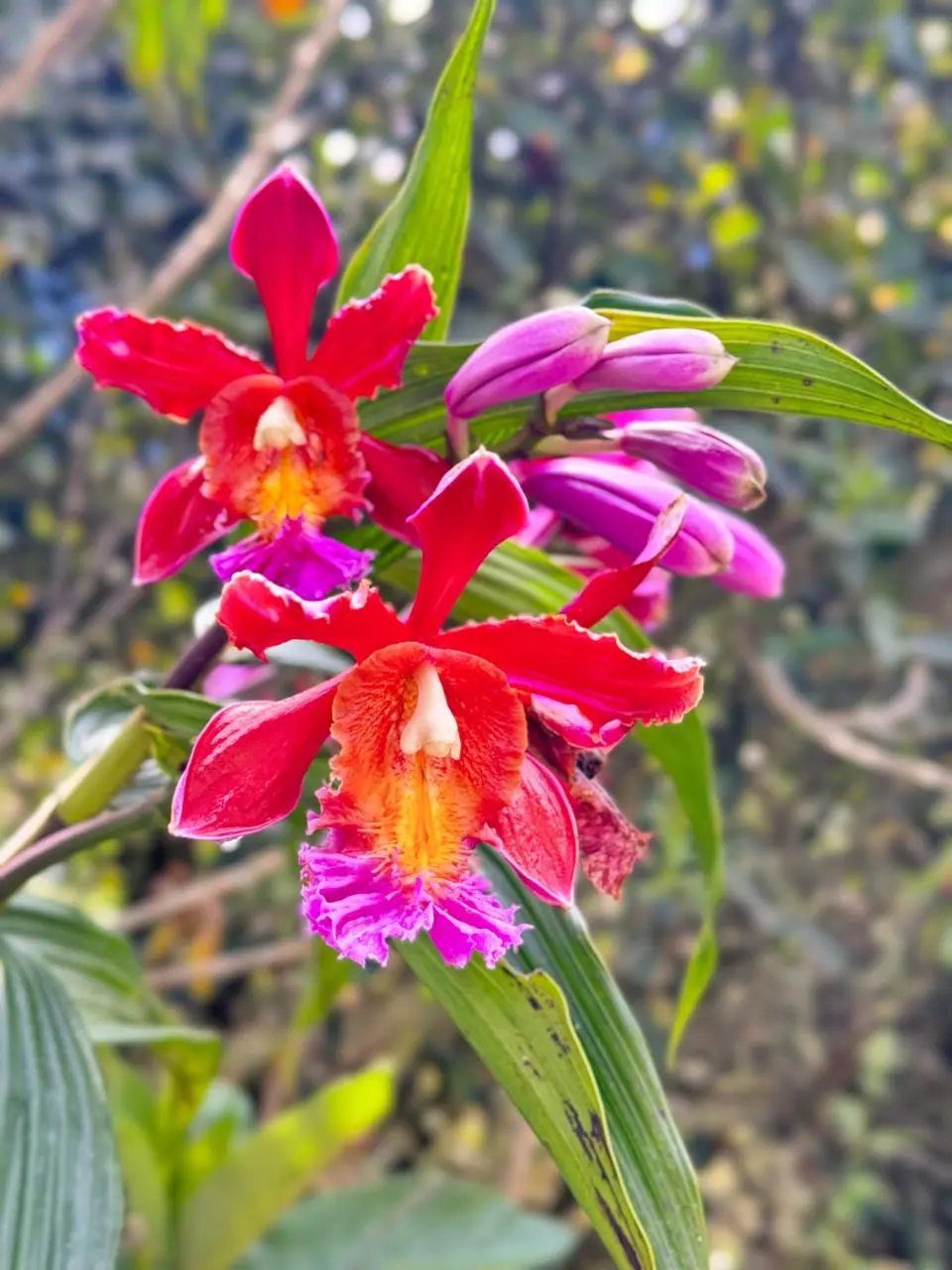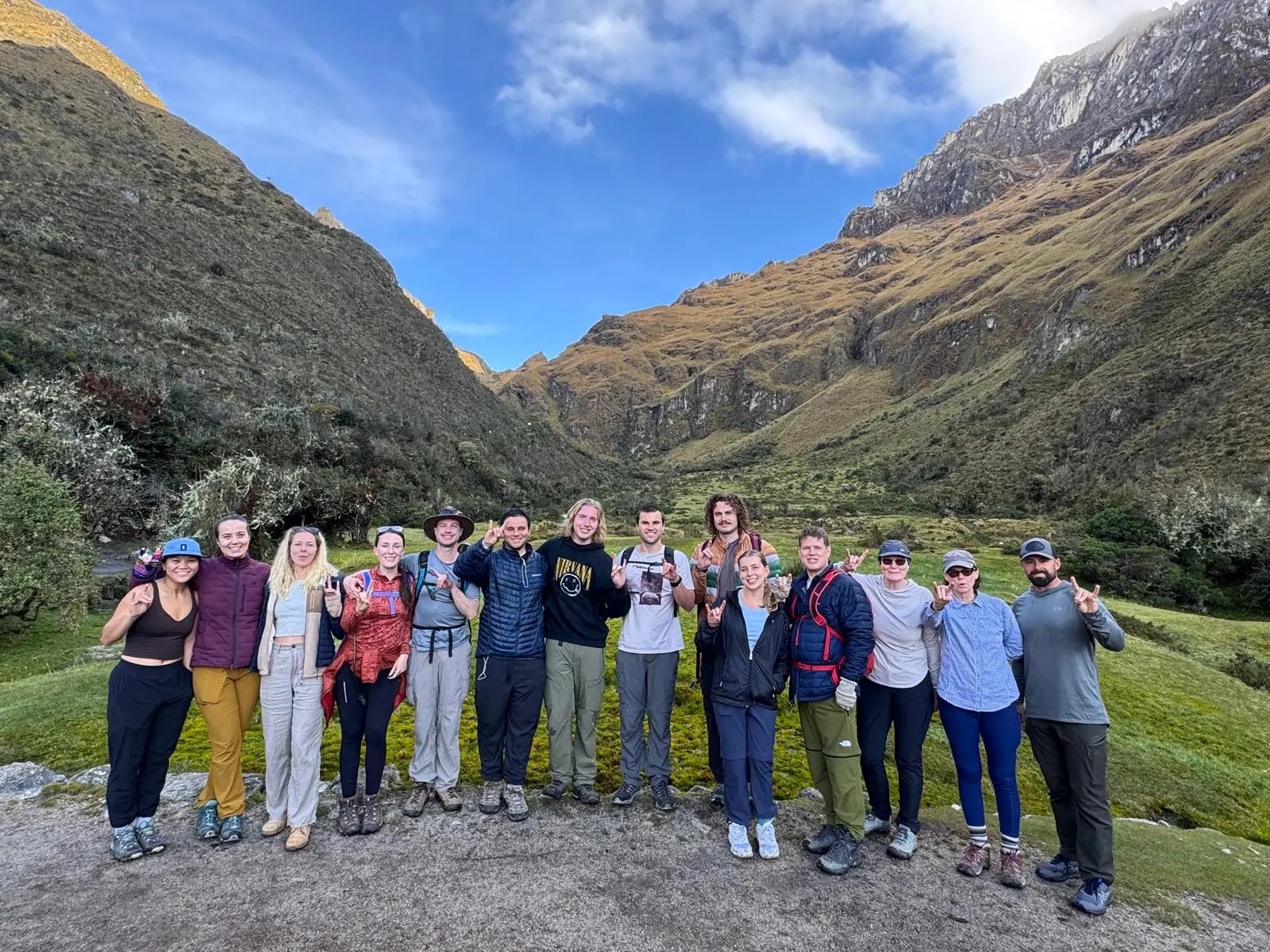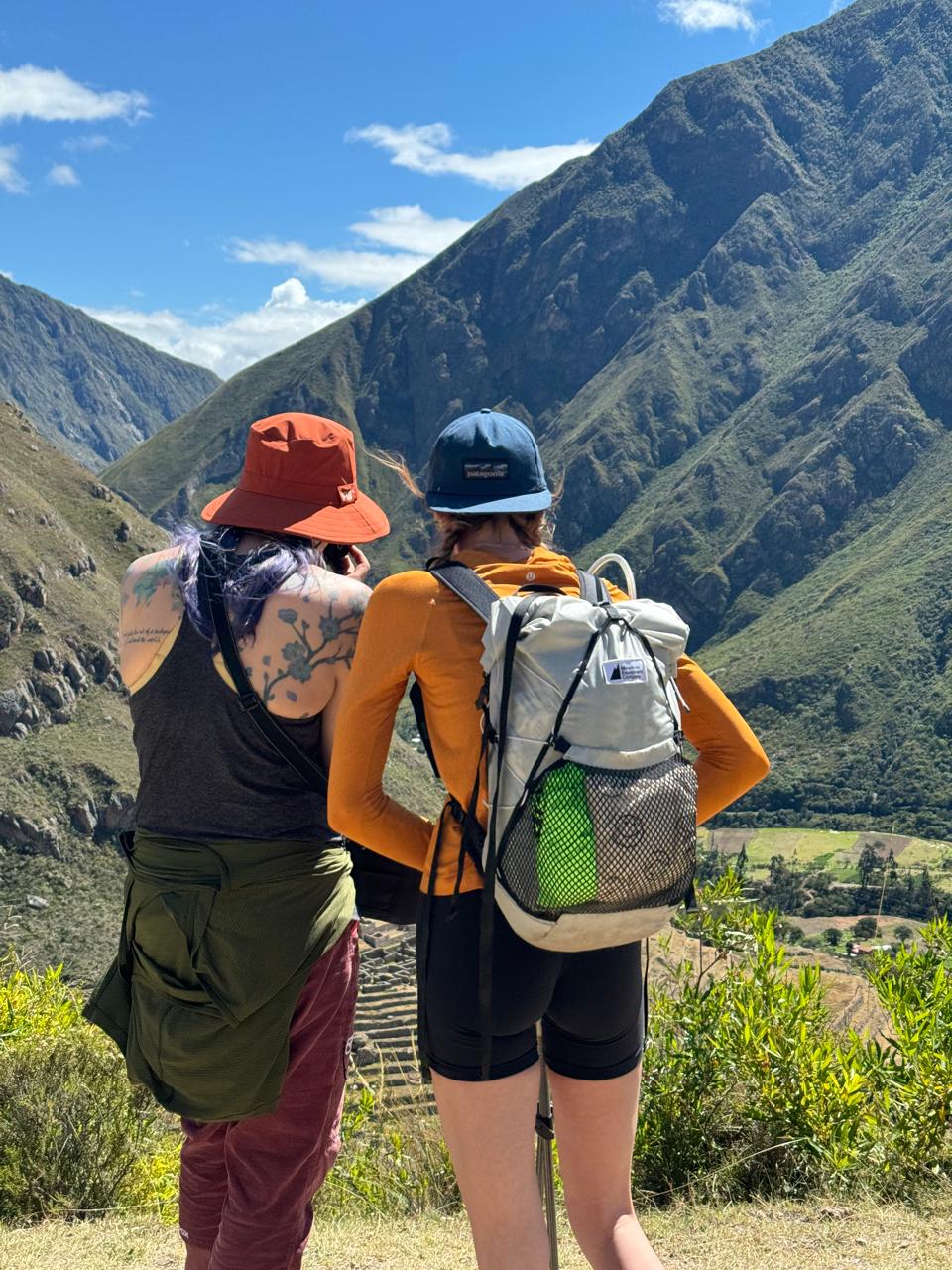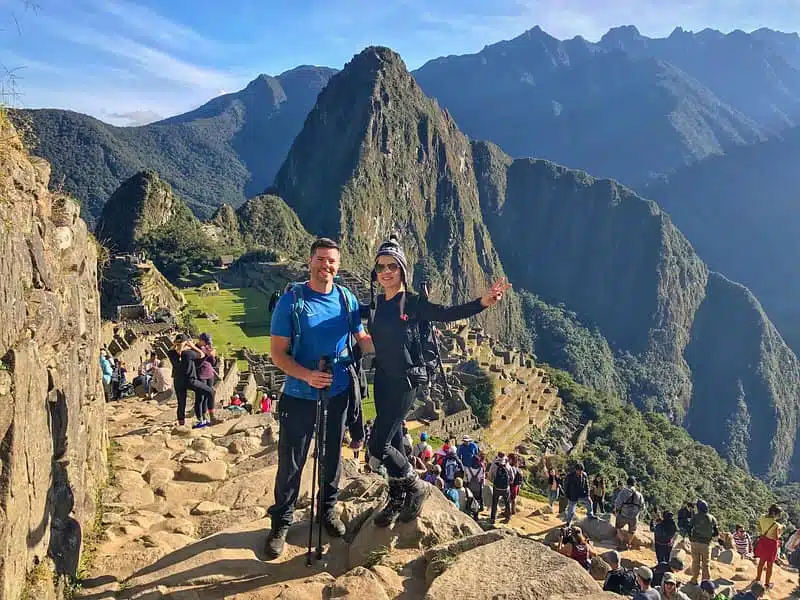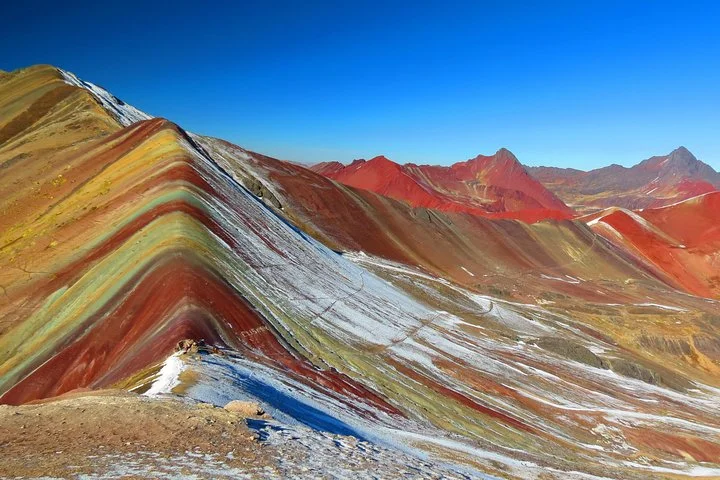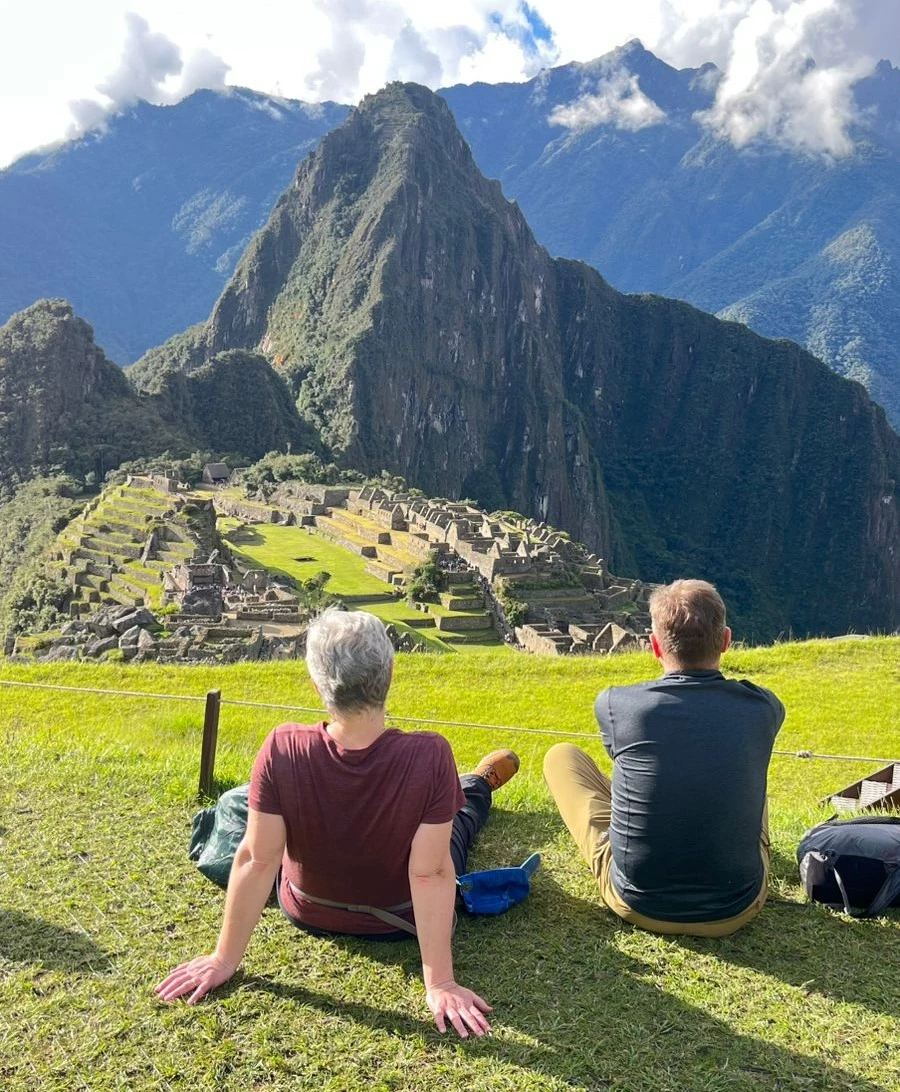The Inca Trail 4-day hike is the most popular trekking route to Machu Picchu, offering visitors the opportunity to combine ancient Inca history with stunning Andean scenery. This guided adventure spans approximately 43 kilometers and includes visits to impressive archaeological sites such as Wiñay Wayna and Runkurakay.
The Classic Inca Trail is a well-known route that ends at the Sun Gate, where visitors can enjoy a breathtaking sunrise view of the citadel. The Inca Trail to Machu Picchu, a four-day experience, is considered a bucket-list journey for travellers seeking culture, challenge and awe-inspiring landscapes.
Inca Trail 4 Day Hike: Best Classic Route to Machu Picchu
Authentic Adventure: Come and explore the historical legacy of the Incan civilisation.
Breathtaking Scenery: You will have the opportunity to enjoy views of lush cloud forests, majestic mountains and dramatic landscapes.
Cultural Immersion: The route offers the opportunity to discover archaeological treasures such as Runkurakay, Sayacmarca, and Wiñay Wayna.
Iconic Arrival: The Sun Gate (Inti Punku) is a site that should not be missed by any visitor to Machu Picchu. The sunrise over this iconic landmark is an experience not to be missed.
Trekking Options to Suit Every Adventurer: The Inca Trail offers a variety of routes, each designed to cater to different preferences and fitness levels. Please find below the main options.
A Brief History of the Classic Inca Trail
The Classic Inca Trail forms part of an extensive network of roads constructed by the Inca Empire to connect its vast territory. These sacred routes were utilised by Incan messengers, priests and nobles travelling to Cusco and sacred sites such as Machu Picchu.
The Inca Trail to Machu Picchu four-day route is a testament to the preservation of this heritage. The opportunity to explore the ancient ruins of the Inca civilisation is now available to modern trekkers. These ruins are located deep in the Andes mountains and are protected by the Peruvian government.
Why Is the Inca Trail So Popular Today?
The four-day classic Inca Trail is renowned the world over for its unique combination of natural beauty, cultural history and adventure. Its popularity is due to the fact that it is the only route into Machu Picchu through the iconic Sun Gate.
Many trekkers consider this the best Inca Trail tour because of the unique blend of mountain passes, cloud forests, and well-preserved Inca ruins. Completing the trail is a transformative experience that continues to attract thousands of travellers every year.
When Was the Inca Trail Discovered by the Modern World?
Although the local population was well aware of Machu Picchu and the Inca roads, the site was introduced to the world in 1911 by explorer Hiram Bingham. Over time, researchers have traced various paths used by the Incas, including the now-famous Inca Trail to Machu Picchu, which takes four days.
Following its rediscovery, the Classic Inca Trail has been meticulously preserved and regulated. The trail's original purpose remains a subject of ongoing study by archaeologists and historians. Many believe it was a sacred pilgrimage route leading to the royal estate of Machu Picchu.
How Many Ecological Zones Are on the Inca Trail?
The Inca Trail 4-day hike is characterised by its passage through at least four distinct ecological zones, as it traverses dramatic altitudes ranging from 2,600 to over 4,200 metres. The region is characterised by a variety of natural habitats, including high Andean grasslands, cloud forests, mountain tundra and subtropical jungles.
The 4-day Classic Inca Trail is distinguished by its diversity, which sets it apart from other similar offerings. Peru's natural heritage is showcased to hikers in a variety of ways. They experience shifting climates, scenery, and vegetation in a short period, which provides a rich and immersive encounter.
Popular Flora and Fauna on the Trail
The Classic Inca Trail is home to hundreds of native plant species and dozens of animal species. Trekkers will have the opportunity to observe vibrant orchids, ancient Polylepis forests, and potentially catch glimpses of Andean condors or the elusive spectacled bear.
As you hike the four-day classic Inca Trail, you will also have the opportunity to observe hummingbirds, llamas and butterflies fluttering through the misty cloud forest. The biodiversity is one of the trail's most unexpected and memorable highlights.
Can Travelers Hike the Inca Trail Alone?
Unfortunately, it is not possible to complete the Inca Trail 4-day hike on your own. Due to the stringent regulations in place, hikers are required to be part of a group led by a licensed tour operator. This approach is designed to safeguard the trail's environment and to ensure that cultural and historical sites are treated with the respect they deserve.
We would like to inform you that the safest and most rewarding way to enjoy the Inca Trail tour is to join an organised trek. The professional guides will provide insight, support and logistics, allowing you to focus on the experience.
Permits and Availability
Please note that permits for the Inca Trail to Machu Picchu are limited to 500 people per day, including guides and porters. These sell out quickly, especially from May to September, so it is essential to book 5–7 months in advance.
The four-day classic Inca Trail is one of the most sought-after treks on the planet. Early planning is essential for securing your place and ensuring you join a reputable tour provider for this iconic journey. To verify permit availability for the Inca Trail 4 day hike, you can check the official government reservation system at: tuboleto.cultura.pe
Why Is the Trail So Regulated?
Regulations are in place to protect the delicate environment and archaeological sites along the Classic Inca Trail. The area has seen heavy foot traffic and unregulated trekking in the past, which has threatened the integrity of this sacred path. In response, the Peruvian government has implemented measures to limit access to the site.
Strict permit systems have been implemented to ensure the Inca Trail 4-day hike remains sustainable. Tour companies are obligated to adhere to the principles of eco-tourism, and the welfare of porters is subject to close monitoring, ensuring a responsible travel experience for all.
How Many Travel Agencies Operate the Inca Trail?
There are over 150 licensed travel agencies authorised to operate the four-day Inca Trail to Machu Picchu. However, only a portion of these companies consistently deliver quality service, ethical treatment of porters, and eco-conscious practices.
Travellers seeking the best Inca Trail tour should conduct thorough research. It is advisable to check reviews, certifications and inclusions to ensure a safe and meaningful experience on the trail.
Best Tour Operators for the Inca Trail 4 Day Hike
Please find below a list of six highly-rated operators for the four-day Inca Trail hike:
Qoricancha Expeditions is a local company with a strong focus on customer satisfaction.
Alpaca Expeditions is committed to providing excellent equipment and meals.
Llama Path – Polices on ethical porters
G Adventures is an excellent option for small groups.
Intrepid Travel – Sustainability focus
Peru Treks – Established reputation and local guides
All of these companies offer licensed services for the best Inca Trail tour experience.
Why Qoricancha Expeditions Is Your Best Choice
Qoricancha Expeditions is a leading provider of Inca Trail tours, renowned for its comprehensive local expertise, highly trained guides, and personalised service. Their small group sizes ensure a more intimate and enriching journey.
As a trusted local company, they prioritise sustainable practices, fair porter treatment, and top-tier logistics. By choosing to book your four-day Inca Trail hike with Qoricancha Expeditions, you can be confident that you are supporting a meaningful and responsible adventure to Machu Picchu.
How Long in Advance Should You Book the Inca Trail?
Permits for the four-day Classic Inca Trail are in high demand and sell out quickly, especially during the dry season months (May to September). To guarantee your participation, it is advisable to reserve your trek at least 5–7 months in advance.
The Inca Trail to Machu Picchu, a four-day hike, is widely regarded as one of the most exclusive trekking experiences available on the global market. Planning ahead is essential for ensuring availability and facilitating adequate preparation for the journey.
Why the Inca Trail Is One of the Top 3 Treks in the World
The Inca Trail 4-day hike is consistently ranked among the world's top treks, alongside such prestigious destinations as Everest Base Camp and the Annapurna Circuit. Its unique combination of history, scenery, and spiritual significance makes it a truly remarkable destination.
The four-day Classic Inca Trail offers more than just a physical challenge; it provides a deep connection to ancient culture, culminating in one of the most iconic views on Earth. The following image depicts the site of Machu Picchu as seen from the Sun Gate, with the sunrise clearly visible.
Following due consideration, it is important to determine whether the Inca Trail 4 Day Hike is suitable for you. Can I Book It?
The Inca Trail 4-day hike covers approximately 45 kilometres of varied terrain, including steep climbs and high-altitude passes. It is ideal for travellers with moderate fitness levels who wish to experience the Classic Inca Trail and explore ancient ruins en route to Machu Picchu. If you are interested in adventure, history and nature, the four-day Inca Trail to Machu Picchu is an exceptional experience.
To ensure a successful booking for the Inca Trail tour, it is essential to plan in advance, as permits for the four-day classic tour are limited and sell out quickly. It is essential to reserve your place at least 5–7 months in advance with a licensed operator to guarantee your participation and ensure a secure, guided trek along this renowned route. Are you ready to embark on this unforgettable adventure? Qoricancha Expeditions is your trusted local expert in organising Inca Trail journeys. We are dedicated to making your trip truly exceptional.
Important FAQs About Inca Trail to Machu Picchu
What’s the Inca Trail?
The Inca Trail is a well-known route dating back to Inca times, originally part of a vast network of routes used exclusively by selected individuals. The designated tourism route is the only trail that leads directly to Machu Picchu, making it an exceptional experience for trekkers.
The Inca Trail begins at Kilometer 82, situated approximately one hour from the city of Ollantaytambo, and spans four days and three nights. The trek itself takes you through breathtaking landscapes, ancient ruins, and lush cloud forests. On the fourth day, hikers will reach Machu Picchu, where they will have the opportunity to explore the magnificent Inca citadel and take in the stunning views that have made this destination one of the Seven Wonders of the World.
If I don’t have my passport now, What should I do?
If you’re in the process of booking your trek, you can initially use your ID or driver’s license for the reservation. However, please note that this is only a temporary solution. Once you have your passport information, you will need to send it to us to finalize your booking.
What’s the high season?
In Cusco, the year is divided into two main seasons: the wet season and the dry season. The high season typically falls within the dry season, from April to October, when the weather is more favorable for outdoor activities, especially trekking. The lack of rain during these months makes it the ideal time to visit, and as a result, Cusco sees higher tourism traffic during this period.
Due to the increased demand, Inca Trail permits tend to sell out faster between April and October compared to the wet season months. If you plan to trek the Inca Trail during the high season, it’s essential to book your permits early to secure your spot.
Do I need previous experience hiking to do the Inca Trail?
While previous hiking experience is not mandatory for the Inca Trail, it’s important to be in good physical condition. The trek involves challenging terrain, including steep ascents, and requires strength and endurance. Our team of professional guides and porters will be there to assist you every step of the way.
To prepare, we recommend focusing on exercises that improve strength and stamina, with step climbing being one of the most effective workouts for this type of trek.
What kind of gear do I need to bring?
The Inca Trail trek is a multi-day adventure, requiring essential trekking gear for comfort and safety. Be sure to pack items like trekking boots, trekking pants, waterproof jackets, hats, trekking socks, walking sticks, base layers, and a trekking backpack.
For your convenience, we’ve created a detailed packing list that highlights exactly what to bring for a more comfortable and enjoyable experience on the trail.
Is the Inca Trail inside the Sacred Valley?
While the Inca Trail begins just 1 hour away from Ollantaytambo, the last city in the Sacred Valley, it’s important to note that the Inca Trail itself is not considered part of the valley. As such, none of the Sacred Valley ruins are included in the trek. The journey primarily focuses on the ancient paths leading to Machu Picchu, passing through stunning landscapes and Inca ruins along the way.
Is the Inca Trail Suitable for Families with Children or Older Adults?
The suitability of the Inca Trail for families with children or older adults depends on a case-by-case basis, taking into account the age and physical condition of the participants. While the Inca Trail is a physical challenge, it can be an incredible experience for those who are prepared.
For families with children, if the kids are accustomed to trekking or outdoor activities, they will likely enjoy the adventure and have fun. However, it’s important to ensure they are physically ready for the demands of the trail.
Similarly, for older adults, it’s crucial to consider their hiking experience and overall health before embarking on the trek. Those in good health and with prior trekking experience can enjoy the Inca Trail comfortably, while others may need to assess their readiness and physical limitations to ensure a safe and enjoyable journey.
What’s the total distance I’m going to hike?
The Inca Trail covers a total distance of 43 kilometers (26 miles), typically completed over 4 days. Each day, trekkers walk approximately 14 kilometers (8.7 miles), with the final day covering only 5 kilometers (3.1 miles) from the Sun Gate to Machu Picchu. This final stretch is a short, but rewarding, walk that leads to the breathtaking view of Machu Picchu at sunrise.
Are there bathrooms on the Inca Trail?
Throughout the Inca Trail, there are several bathroom stops along the way, especially at the beginning of the trek. These facilities are managed by locals, and a small fee of 1 sol grants you access. The bathrooms are typically clean, but keep in mind that they are squat toilets. Toilet paper is rarely provided, so it’s essential to bring your own. Additionally, you are not permitted to flush paper, so be sure to follow the local guidelines.
How’s the food on the trek?
During your Inca Trail trek, all meals are prepared by our expert trekking chefs at the campsite. You’ll enjoy hot, nutritious meals designed to fuel your hike and aid recovery. Our chefs will prepare three meals daily: breakfast, lunch, and dinner, all tailored to meet your energy needs while keeping the flavors authentic.
Please note that lunch on the final day is not included. However, your guide will recommend several options based on your budget.
What is the weather on the Trail?
The weather along the Inca Trail depends on the season you visit Cusco. During the dry season (April to October), expect sunny skies and little rain, though strong sunlight due to the high altitude and low humidity, so be sure to pack sunscreen. In contrast, the wet season (November to March) brings daily rainfall, sometimes throughout the entire day, requiring waterproof gear. Temperatures can drop to 0°C (32°F), so pack warm layers for the trek.
Will I get water on the Inca Trail?
In the morning, you’ll only need to carry enough water to last until the first lunch stop. At each meal along the Inca Trail, you’ll be provided with fresh, boiled water to refill your water bottles or hydration packs, ensuring you stay hydrated throughout the trek.
How much should I plan to give in tips to my Guides, Porters and Chefs?
Tips for your tour guides, cooks, and porters are not included in the price of your Inca Trail tour. These are optional and are given as a gesture of appreciation for their exceptional service. While tips are not mandatory, they are a great way to show gratitude for the hard work and dedication of the staff during your trek.
If I rent an extra porter to carry my pack, does the porter walk along with me?
During your Inca Trail trek, you will only have access to your duffel bags at breakfast and dinner while at the campsite. This is because the porters move faster than the trekking groups, ensuring that your gear is transported efficiently to each campsite.
At what time do we arrive at Machu Picchu on the last day?
The final day of the Inca Trail is the most thrilling part of the trek, as we reach the Sacred City of the Incas. The group will begin the day early, hiking the final two hours together. We’ll arrive at the Sun Gate of Machu Picchu at approximately 7:30 a.m., offering a breathtaking first glimpse of the iconic site.
Will we get to see the sunrise from the Sun gate?
The sunrise at Machu Picchu varies depending on the time of year. For tours from May to September, the sun rises at approximately 7:20 a.m., giving hikers the chance to witness the iconic sunrise from the Sun Gate. However, for tours from October to April, the sun rises earlier, around 5:30 or 6:00 a.m., so the group may arrive after the sun has already risen.
At what time will we return to Cusco?
After completing the Inca Trail trek, hikers will take a bus to Aguas Calientes, followed by a scenic two-hour train ride through the Sacred Valley. Upon arrival at Ollantaytambo, an Alpaca Expeditions bus will be waiting to take you on a two-hour drive back to Cusco. Depending on the train schedule, the group will return to Cusco between 7:00 to 8:00 p.m., marking the end of an unforgettable adventure.
Where are we going to get dropped off?
At Qoricancha Expeditions, we offer door-to-door service for all our Inca Trail trekkers. We will pick you up directly from your hotel in Cusco and drop you off at the same location after your trek. If you plan to change hotels during your journey, simply let us know, and we will ensure your pick-up and drop-off are adjusted accordingly for your convenience.
Can I go with my kids to the hike?
Yes, we’ve hosted many families on the Inca Trail trek, and kids often enjoy the adventure, especially if they are active and used to physical activities. We typically recommend the trek for children 8 years and older. For families with younger kids, we suggest considering the Short Inca Trail or customizing the itinerary for a more relaxed experience. Our professional guides and support staff ensure that everyone, from children to adults, can enjoy this incredible journey safely and comfortably.
Which Circuit is Included in the Machu Picchu Guided Tour?
All Inca Trail hikers—whether on the 4-day, 5-day, 7-day, or 2-day trek to Machu Picchu—will explore the ancient citadel via Circuit 3, as per Machu Picchu’s official regulations. This well-designed circuit covers the site’s most iconic landmarks, including the Main Plaza, Temple of the Sun, water fountains, ensuring a complete and unforgettable experience of Machu Picchu.


